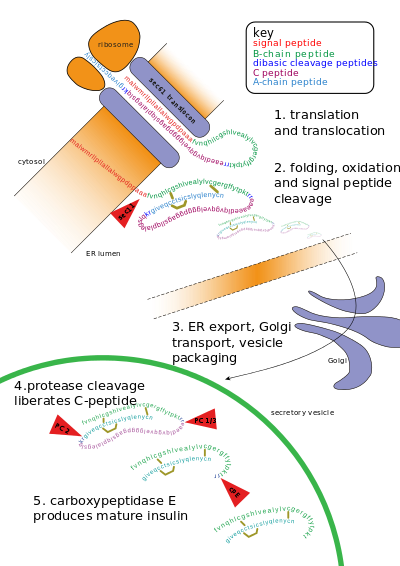Preproinsulin

Preproinsulin is the primary translational product of the INS gene. It is a peptide that is 110 amino acids in length. Preproinsulin is a proinsulin molecule with a signal peptide attached to its N-terminus.
Insulin synthesis pathway
Preproinsulin is a biologically inactive precursor to the biologically active endocrine hormone insulin. Preproinsulin is converted into proinsulin by signal peptidases, which remove its signal peptide from its N-terminus. Finally, proinsulin is converted into the bioactive hormone insulin by removal of two basic pairs of amino acids: the C-peptide.
Almost no preproinsulin exists in the cell, because removal of the signal peptide is not a separate step, but rather is closely linked to translocation of the protein into the endoplasmic reticulum (ER). For the same reason, preproinsulin is rarely used medicinally, unlike insulin, the mature product, and proinsulin, a stable ER intermediate.
See also
External links
- preproinsulin definition in the glossary of the Beta Cell Biology Consortium
